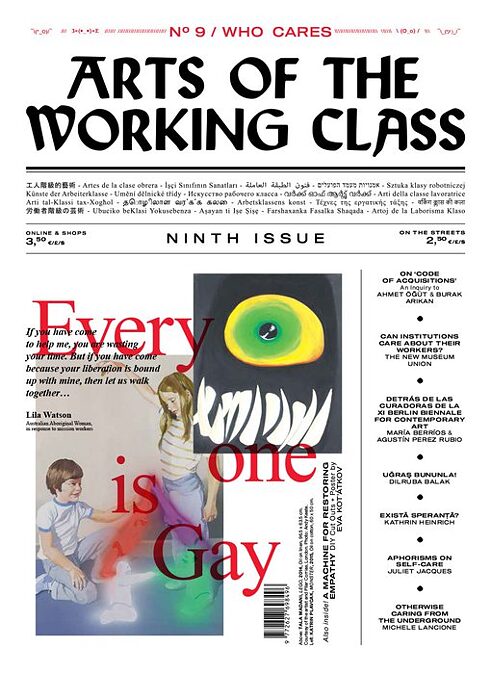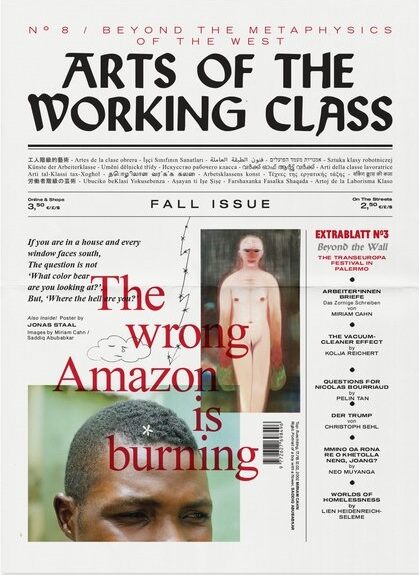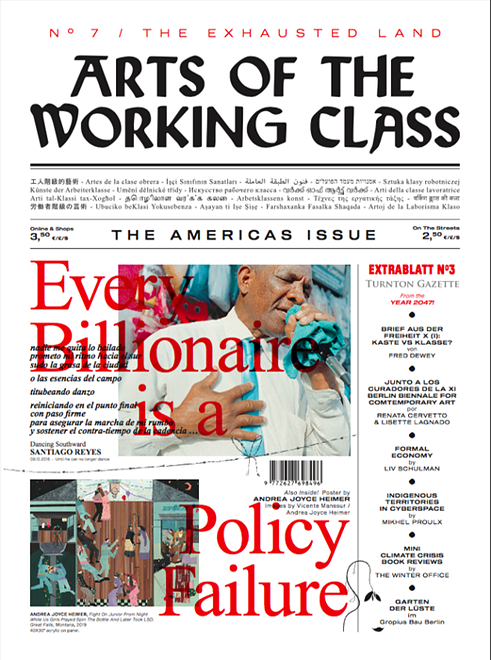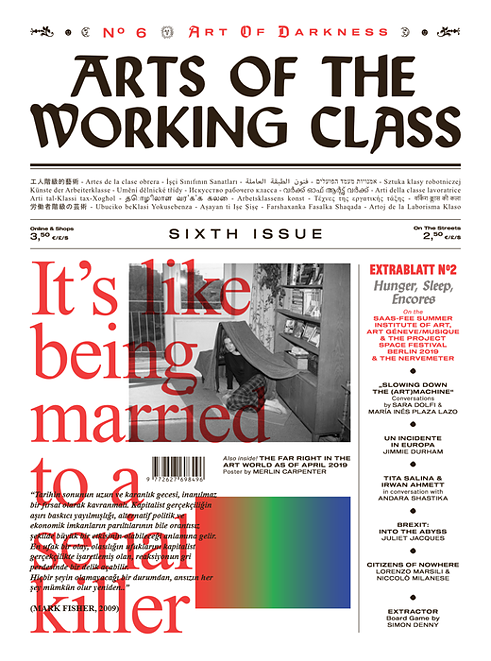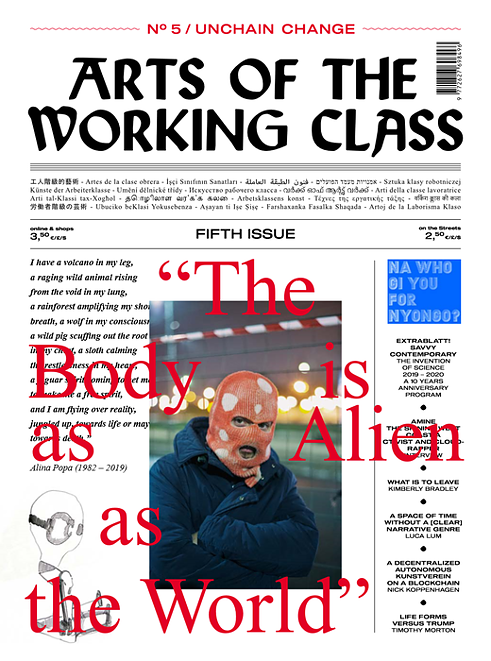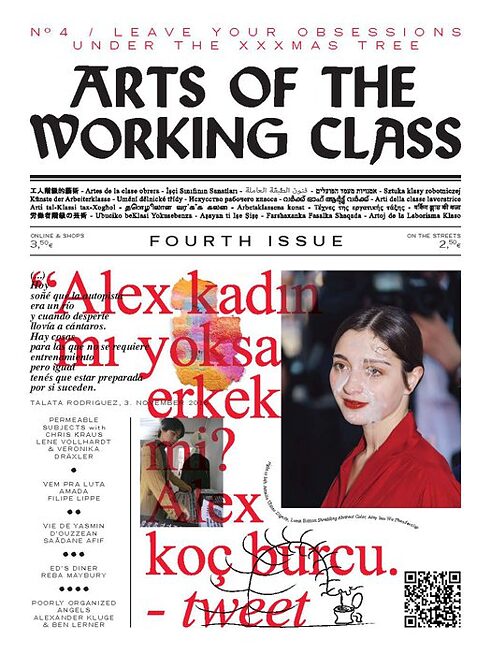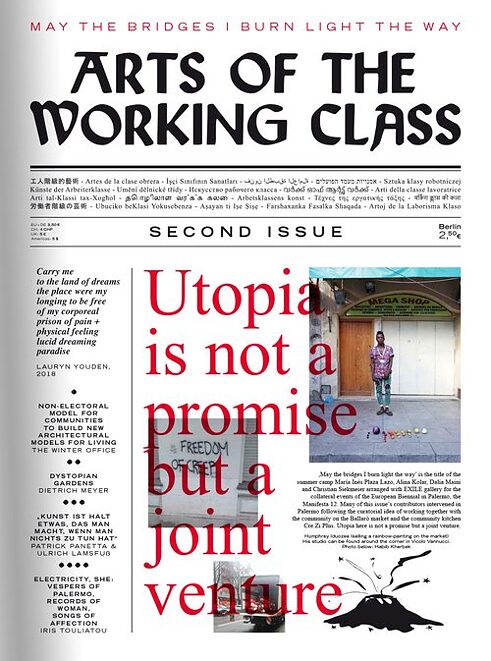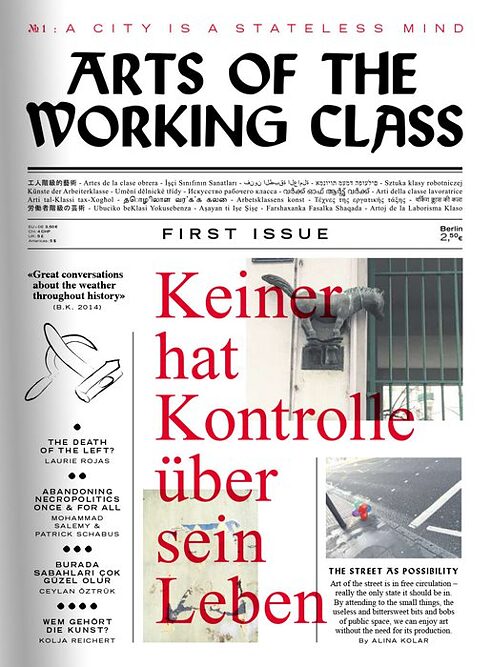Worlds of Homelessness
Art For All
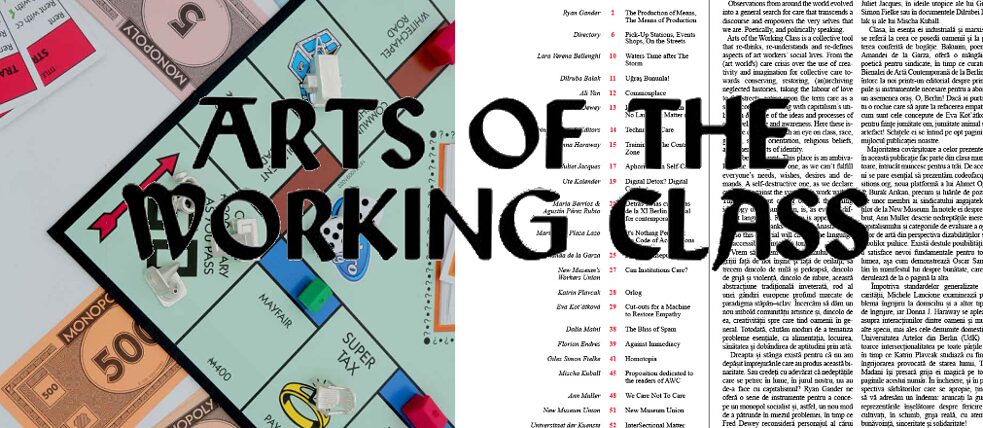
The precarious working conditions faced by cultural professionals inspired the artist Paul Sochaki and the curator Maria Ines Plaza Lazo to launch their “Arts of the Working Class” journal in 2018. Working together with the curator Alina Ana Kolar, they produce the publication today – nine issues of which have appeared to date – for an international readership. Featuring articles by artists, intellectuals, and other contributors, who explore the subject of art from all kinds of different perspectives in their own languages, the journal comes out every two months. Because the journal is distributed by a network of homeless people and students in various countries, the selected topics are intended to appeal to the widest possible readership: from those living on the street to international cultural professionals.
By Elisabeth Wellershaus
How did the idea for the “Arts of the Working Class” come about? What is the backstory of this international homeless newspaper?
Maria: Our starting point was a desire to broach the issue of the precarious conditions that exist within the world of art. By this I mean not only the working conditions that many cultural professionals face today but also the exclusion mechanisms that see many people denied access to art nowadays. For example, there are various art and culture magazines that are extremely overpriced. Publications like “Art Forum” tend to end up only on the coffee tables of the privileged. That’s why we decided to create a newspaper for which people would pay only what they are able to so that it can serve as intellectual nourishment for all. Once the journal had been launched, Alina joined our team. Together, we now publish a newspaper in which the “official representatives” of the art scene meet with people who are active outside this world; they then jointly redefine their perspectives. In principle, anyone can contribute to our journal.
Alina: As we wanted to reach as wide an audience as possible, and because we also wanted to include migrant perspectives, we quickly realized that the newspaper would need to be published in several languages. And not only in the supposedly dominant languages such as English, Spanish, or French. We wanted to give our authors the freedom to decide themselves which language to write their articles in, regardless of which that might be. Consequently, our readers will never understand every article; it was important for us to accept that this is not even possible. That not every experience can be translated. And that there is in any case so much that can hardly be conveyed merely by language alone, and that might be easier to get across by looking at a music score or mathematical formula.
What does the title ‘Arts of the Working Class’ stand for?
Alina: We are attempting to redefine the term working class because changing professional conditions and societal structures have altered the relationships between social classes since the term was coined. Moreover, we see ourselves as being part of the precarious art scene because we also suffer in our work from financially unstable structures. By creating quality content, our aim is provide access to art for people who do not move within cultural contexts as a matter of course. For example, I myself come from a background in which art did not figure; I only discovered it via the various channels made available to the general public. On the one hand, our work is a conscious decision to embrace this community and to resist the pressure to adapt and conform within an otherwise brutal economic system. On the other hand, it is not easy to survive, especially in the world of art. People who work in creative structures these days must cope with everything from economic uncertainty to homelessness. These are precisely the paradoxical circumstances amid which we act and which we wish to address.
Maria: Our newspaper has a circulation of 10,000. The recommended donation in Berlin is 2.50 euros. The entire sum goes to the homeless people and students we work with. By using this network and this distribution approach in various countries we hope to reach as diverse a readership as possible. One of the prejudices we are keen to dispel is that homelessness is synonymous with ignorance. Just because someone has been living on the street for the past 25 years does not mean that they cannot or do not wish to take part in intellectual life. We believe it is important to realize that the boundaries between what appears to be a failed existence and the life of people who feel that their livelihoods are secure are extremely fragile. This is obvious from the mere fact that more and more postdocs are to be found working in cafés these days or being exploited as voluntary staff of cultural institutions.
The first editions of your journal were linked to specific projects. What has guided your choice of content since then?
Alina: It’s true, our first issue came about in connection with Paul’s Self-reflection exhibition at the EXILE gallery, the second as a result of the Manifesta, and the third accompanied an exhibition in London. Since then, however, i.e. from the fourth issue, we have been independent of any galleries or institutions, and have selected a focal topic for each edition. In the past, these have included for example a regional focus in an issue about North and South America, a social focus relating to the so-called “care economy”, and an edition about the hierarchies in the art world.
Maria: The newspaper was created at a time when the borders between cultural production and policymaking had become completely blurred. We do not have to search very hard for a topic if we want to illustrate how art and politics overlap. Artists are protesting, establishing associations, and getting politically engaged all over the world. On the other hand, there are new political movements emerging in countries like Germany that are so socially provocative that topics can literally be found on the street. However, one macro-level theme would certainly involve questioning neo-colonial structures within Western cultural organizations. It is simply a fact that there is a canon of accepted work and activities here that is dictated by firmly established hierarchies. We are generally experiencing that people in many European countries are not really embracing social diversity because suppressive mechanisms are still in action. As journal publishers, it would be all too easy for us to rant against discrimination and propose some simplistic solutions. But we are more interested in inviting everyone to join a discussion of social issues.
Alina: One article from our current edition, for example, is by Michele Lanzione, who we met in LA at the Goethe-Institut’s Worlds of Homelessness conference. He contributed a wonderful piece entitled “Otherwise Caring from the Underground”. It is precisely the topic that is closest to our heart: that participation and community should not be the privilege of a particular social class.
Arts of the Working Class is published by Paul Sochacki, María Inés Plaza Lazo and Alina Kolar, for the streets of the world.
This newspaper is sold either individually through their webshop or as bundles of fifty copies to bookstores (€175 per bundle, €125 per bundle in Berlin).
